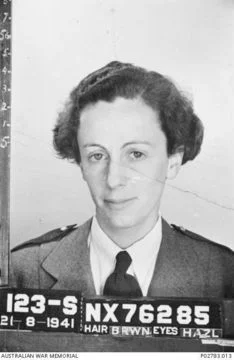- Extended Description
- Nancy HARRIS. Nursing Sister (Lieutenant) NFX76285 AANS, (formerly AANS N108167) attached to 13th Australian General Hospital.
Born 15 January 1913 at Guyra New South Wales to Dr. John Solomon and Florence Cecily Harris, of North Sydney, New South Wales, Australia.
Executed by the Japanese 16 February 1942.
Enlisted 05 April 1941 at North Sydney, New South Wales.
She and sixty-four Australian nurses, wounded service men and 250 civilian men, women and children were evacuated on Vyner Brooke from Singapore on the 12 February 1942. The ship was bombed and sunk by Japanese aircraft of Banka island east of Sumatra on the 14 February 1942. Some of the survivors reached the island only to be captured by the Imperial Japanese Army Some were imprisoned in Palembang and Muntok POW camps others were massacred including twenty-one nurses. On the 16 February 1942 the nurses were ordered to march into the sea and stand in a row where they were shot from behind. She was aged 31. Only one nurse survived, Sister Vivian Bullwinkel.
Commemorated on the Singapore Memorial, Singapore. Included in the Nurses’ War Memorial Chapel in Westminster Abbey, London
Record link
View Digital Image
recordsearch.naa.gov.au
View Digital Image
recordsearch.naa.gov.au

Australian Nurses Memorial, Radji Beach
Sixty five Australian nurses and over 250 civilian men, women and children evacuated on the Vyner Brooke from Singapore, three days before the fall of Malaya. The Vyner Brooke was bombed by Japanese aircraft and sunk in Banka Strait on 14... www.militaryimages.net
www.militaryimages.net















